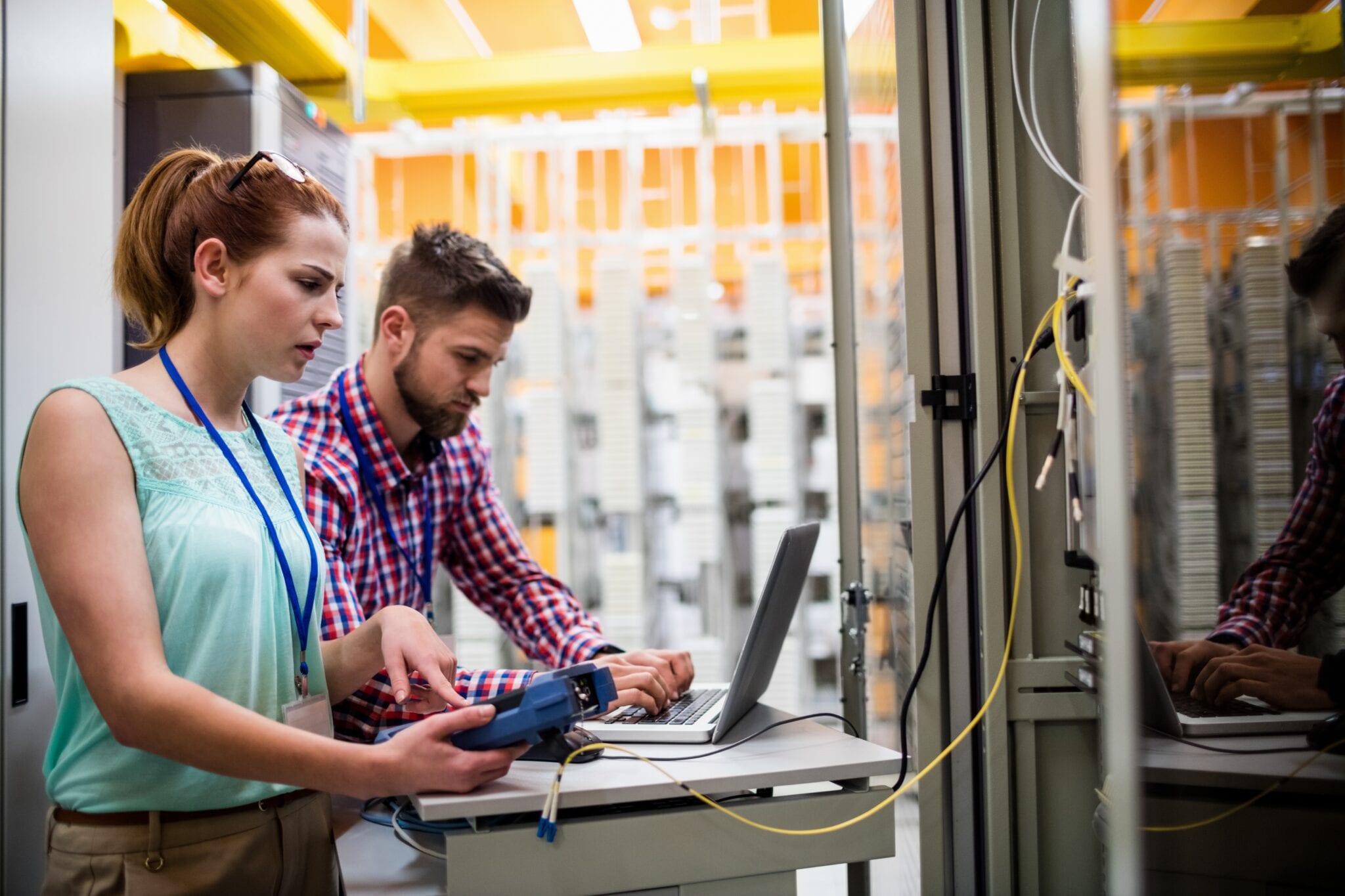What Happens If You Don’t Update Your Data Center Cooling Products?
Outdated data center cooling products can become a significant drain on your bottom line. This is because inefficient cooling methods require more energy to cool modern data center infrastructure configurations, such as high density systems.
Let’s talk about the biggest problem companies run into with outdated data center cooling products – and let’s also talk about the best way you can fix this issue. Fair warning: our solution may not be what you expect to hear.
Problem: Outdated Data Center Cooling Products Increase Energy Costs
The ideal temperature for data center equipment is 70-75 degrees Fahrenheit, but to counteract ineffective heat distribution, most companies keep their data centers a bit colder, just in case. This “just in case” data center cooling methodology is a good idea for keeping your equipment safe – but it sure can add up to extraordinary (and completely unnecessary) energy costs. Especially with today’s highly efficient and very small servers.
The larger servers of the past had a lot more room in them for airflow. For these legacy systems, in-room cooling or row-based cooling was often enough to deliver cold air where it was needed. Today’s smaller systems are so tightly packed that they don’t offer much airflow – and without modern portable, precision cooling solutions (preferably rack based), cold air is less likely to get where it needs to go.
Solution: Careful Server Room Design and Monitoring Can Cut Those Energy Costs
You probably did not expect to hear that better server room design and monitoring are the secret to cutting costs in the data center. You probably expected us to give you a lengthy sales pitch for costly data center cooling products. (We couldn’t resist linking to our pitch.)
Of course, the latest data center cooling solutions are going to solve a lot of your cooling issues, especially if your current solutions are outdated. However, before you invest a lot of money into products, you need to determine where your problem truly lies.
- Energy monitoring, typically delivered by sensors on rack-based PDUs, can help you understand where and when your servers are using the most energy. This will help you subtract this usage from your overall energy burden, so you know how much you are spending on cooling costs versus power costs.
This can help you determine a realistic ROI for upgrading or updating your cooling equipment and can help you figure out where your top priorities should lie when it comes to considering rack-based cooling systems.
- Thermal modeling, performed by an engineer or other expert in computer room thermodynamics, can help you identify if the cold air you are generating is going where it is most effective: namely into the air intakes of your servers.
If you see that your cold air isn’t going where you want it to go, or that it is significantly warming when it mixes with hot air fanning out of your equipment, you can use this information to plan for better server room design, like setting up a hot aisle or a cool aisle, delivering cooled air through raised floor tiles in a cool aisle, or constructing shielding that directs air to where it should go.
Up-to-Date Data Center Cooling Setups Ease the Burden of Data Center Management
Today’s emerging technologies deliver surprisingly improved IT performance every 18 months or so, usually with more power packed into a smaller footprint. Companies that are diligent about maintaining their investments into the latest technologies can ensure that they reliably achieve the best IT performance possible.
However, the smaller and denser the latest servers become, the more they will require modern, portable, precision data center cooling products to avoid overheating and maintain optimum energy usage and performance.
To get the most out of your data center equipment, now and in the future, it’s a smart idea to set up the most flexible data center cooling design with monitoring.
Contact Donwil to Learn More About Your Options for Data Center Cooling
Since 1965, Donwil has been the team to trust for sales backed by responsive and reliable service for enterprises that want to get the most from their critical business process power and cooling solutions. As the exclusive provider of Vertiv, Liebert, Starline, and Hitachi, Donwil delivers a range of critical services and solutions to keep organizations across Western Pennsylvania, Western Virginia, and Eastern Ohio always running.

